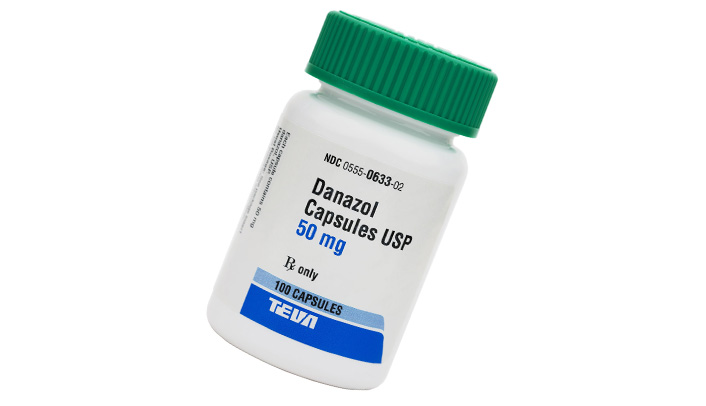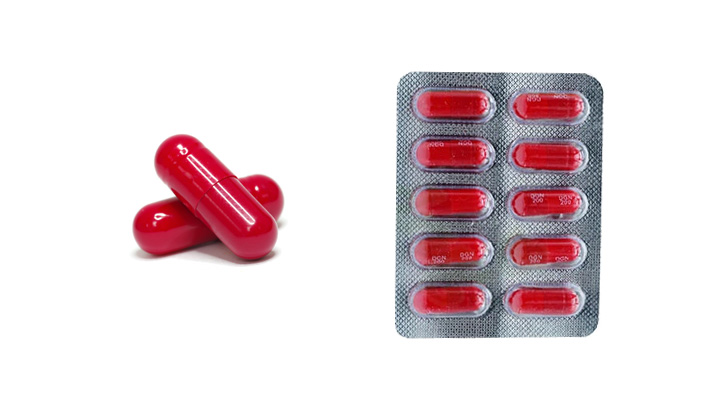Danazol
Danazol is the generic name for 17-alpha-ethinyl-17-beta-hydroxy-4-androsten-(2,3-d) isoxazole. The common brand names are Danocrine, Danol, Danazol and Danatrol. It is a very famous steroid used to treat endometriosis. In 1971 danazol was the very first drug approved for the treatment of endometriosis but due to its masculinising side-effects it has been replaced by gonadotropin releasing hormone (GnRH).

Mechanism Of Action
Danazol works by its antigonadotropin effect on the pituitary where it basically inhibits the effects of normal endometrial growth and shrivel up the deposits of endometrium. It also works by directly cutting off the target tissue which in return will not help in growing of abnormal endometrium as the source of energy has been cut off.

Uses Of Danazol
- Menorrhagia
- Immune thrombocytopenic purpura
- Fibrocystic breast disease
- Breast pain
- Premenstrual syndrome
- Hereditary angioedema
- Diabetic macular edema
- Endometriosis
- Pelvic pain
- Infertility
- This medicine is also used in men and women both to treat swelling of face, arms, legs and abdomen
- It also helps in increasing protein in immune system
Dosage And Drug Administration
Dosage depends upon the patient’s outcome of the drug and doctor’s recommendation. The usual dose of an adult is 100 to 200mg orally for endometriosis the maximum dose is 400mg orally with or without the meals two times a day.
For fibrocystic breast disease 50mg to 200mg two times a day orally.
For angioedema 200mg two times day orally.
Danazol is not used for liver or renal dysfunction.
Side-Effects Of Danazol
- Headache
- Vomiting
- Nausea
- Weakness
- Swelling of face, tongue, lips
- Acne
- Hive
- Allergic reaction
- Hot flashes
- Mood changes
- Weight gain
- Fluid retention
- Liver tumors
- Dark coloured urine
- Muscle cramps
- Bleeding gums
- Bloating
- Changes in vision
- Chills
- Fever
- Diarrhoea
- Coughing up blood
- Weakness on one side
- Difficulty in speaking
- Difficulty in swallowing
- Discharge from nipple
- Eye pain
- Fast heartbeat
- Joint pain
- Loss of appetite
- Purple coloured spots
- Shortness of breath
- Sore throat
- Frequent epistaxis
- Sweating
- Tingling sensation
- Easy bruising
- Yellow eyes and skin
- Decrease in breast size
- Irregular menstrual periods
- Chest pain
- Tenderness of stomach or abdomen
- Blood in urine
- Weakness in legs
Precaution And Warning
Please give your full personal and past history of any surgeries you had or any allergic reaction due to any medication. Do not start or stop any medication without doctor’s approval. If you have liver, kidney or intestinal diseases please tell your doctor about it.
Pregnancy And Breast-Feeding
This medicine should not be used while pregnant as it may harm the unborn baby. It is not known if this medicine gets secreated into milk or not but due to harmful effects it should not be used during breast-feeding.
Drug Interaction
Blood thinners, carbamazepine and statin are some of the drugs that should not interact with Danazol as it may change the course of drug.
Drug Images

Endometriosis
Endometriosis is a medical condition in which tissue similar to the lining inside the uterus (endometrium) grows outside the uterus. This tissue, known as endometrial implants, most commonly involves the pelvic organs, such as the ovaries, fallopian tubes, and the tissue lining the pelvis. However, in rare cases, it can spread beyond the pelvic organs.
During a typical menstrual cycle, the endometrial tissue inside the uterus thickens, breaks down, and is shed as menstrual bleeding. However, the displaced endometrial tissue in endometriosis behaves similarly—it thickens, breaks down, and bleeds. Since this tissue is located outside the uterus, it has no way to exit the body, causing inflammation, pain, the formation of scar tissue (adhesions), and sometimes fertility problems.



